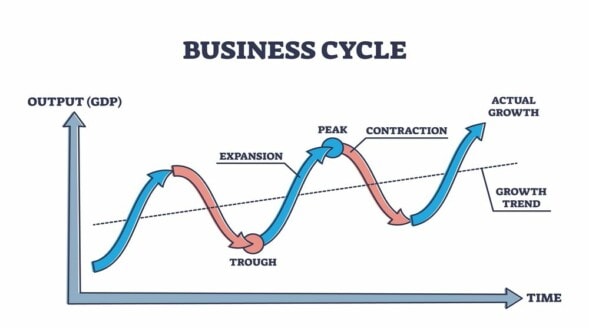Friday’s Financial Update 5-12-2017
by Michelle Smalenberger, CFP® / May 12, 2017WRITTEN BY: MICHELLE SMALENBERGER, CFP ®
Welcome to the weekend when we can look back to review and look forward to refresh!
With a week full of news that was exactly that, I thought it would be beneficial to review some leading economic indicators and how they help us look beyond the steering wheel for how we should invest going forward. These are not the only measures that are important, but provide insight into how we see the economy changing or developing in the near future.
- Market Indexes: Knowing how markets are currently trading relative to historical prices provides context and meaning for how to view their current performance moves. If I know that the S&P500 is trading higher now than it was a year ago, it provides a frame of reference from a year ago to now. People can see the current performance moves higher.
- Jobless Claims Report: This data is reported weekly, but generally analyzed as a monthly average can show a weakening or strengthening economy based on the numbers reported. If an economy is strong, people will be employed and have jobs versus a weakening economy where individuals struggle to find jobs and stay unemployed for long periods of time.
- New Home Construction & Existing Home Sales Report: These figures are reported monthly to help indicate an economy’s health. Early in an expansionary phase housing starts tend to tick up. This doesn’t however report the size or price of the homes it counts which would also be indicative of an economy’s state. Housing starts combined with demand for existing homes shape a more complete picture for health in this area. If while new construction is strong, demand for existing homes are also high then we see elevated spending for consumers. If consumers are spending on housing then this can also lead us to believe other areas of consumer spending are strong too.
- Consumer Confidence: This report is not very exact or accurate in the measurement itself, but the results can lead to a strong sense of expected spending for consumers. If consumers have a confident attitude or perception of their situation it would likely lead to more spending.
- Purchasing Managers Index (PMI): This survey of purchasing managers collects a reading on a variety of measures. For example, it commonly reports “better”, “same” or “worse” readings. It uses only a small sample size of manufacturing companies so a month-to-month variance can be expected. This number, however, is watched heavily as it can lead to predictability for growth in gross domestic product (GDP).
- Durable Goods Report (DGR): This report released by the Census Bureau is a barometer for manufacturers of goods with a life expectancy of more than three years. Purchases like this signify a capacity to expand just like sales in retail signify rising consumer confidence. Because these month-to-month values can change so much year-over-year comparisons are usually used to identify points of direction change in the economy.
- The Beige Book: A summary released eight times each year by the Federal Reserve. Shared in this are discussions from each of the twelve Fed districts and a summary statement. These are non-committal, measured statements by Fed members. Investors then attempt to see the deeper meaning of these reports. The results tend to preface the Federal Open Market Committee (FOMC) meeting actions.
Reviewing some of these leading indicators today, we believe our economy is strong and still has a healthy environment for investing in the foreseeable future. First quarter earnings season has largely surpassed elevated expectations. Consumer confidence is staying strong at high levels.
We are starting to see home ownership levels increase and housing starts generally improve. Inflation seems to be remaining under control even amidst slight wage growth. This leads us to continue to believe the Fed will raise rates in June and then again later this year.
While leading indicators don’t guide every area of how to invest they do provide insight into trends we should pay attention to. This helps to shape our strategy and allocation for investing in today’s economy.
Ready to take the next step?
Schedule a quick call with our financial advisors.
Recommended Reading
Understanding Stock Market & Economic Cycles
Do you remember what an economic cycle looks like? In this week's post we help you understand stock market & economic cycles and what they mean for investors.
2022 Was Tough, Will 2023 Be Better for Investors?
Will 2023 be better for investors? They just suffered one of the worst investment years ever in 2022. There are reasons for hope in certain parts of the stock and bond market. We give our thoughts on the chances of a recession and path of interest rates in this opening post of 2023.

Michelle Smalenberger, CFP®
I have a passion for helping others develop a path to financial success! Through different lenses on your financial picture, I want to help create solutions with you that are thoughtful of today and the future. I have seen in my life the power of having a financial plan while making slight changes of direction from time to time. I believe you can experience freedom from anxiety and even excitement when you know your finances are on track.

